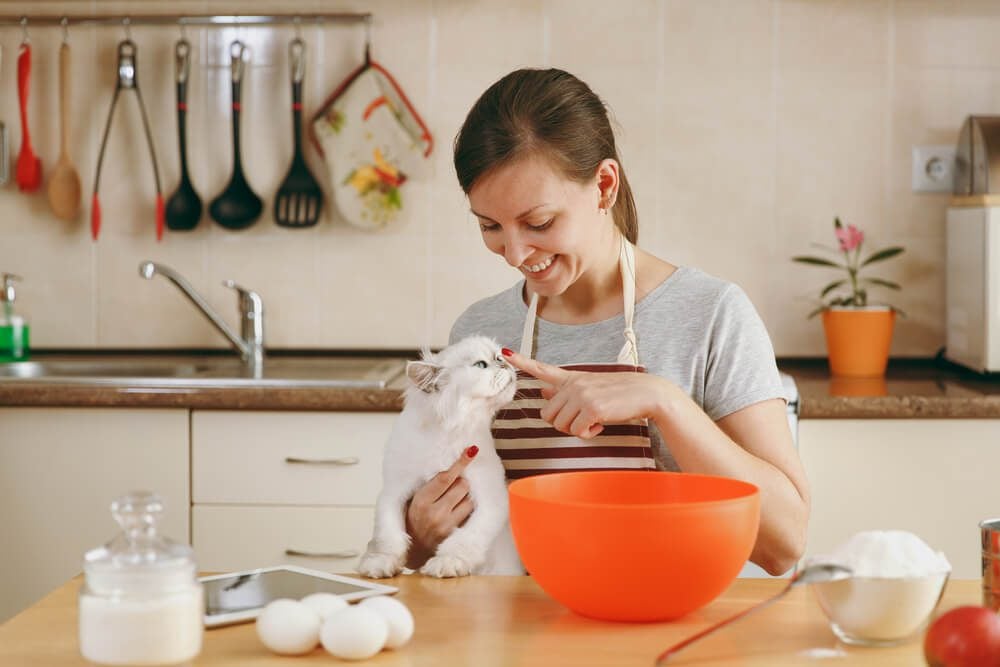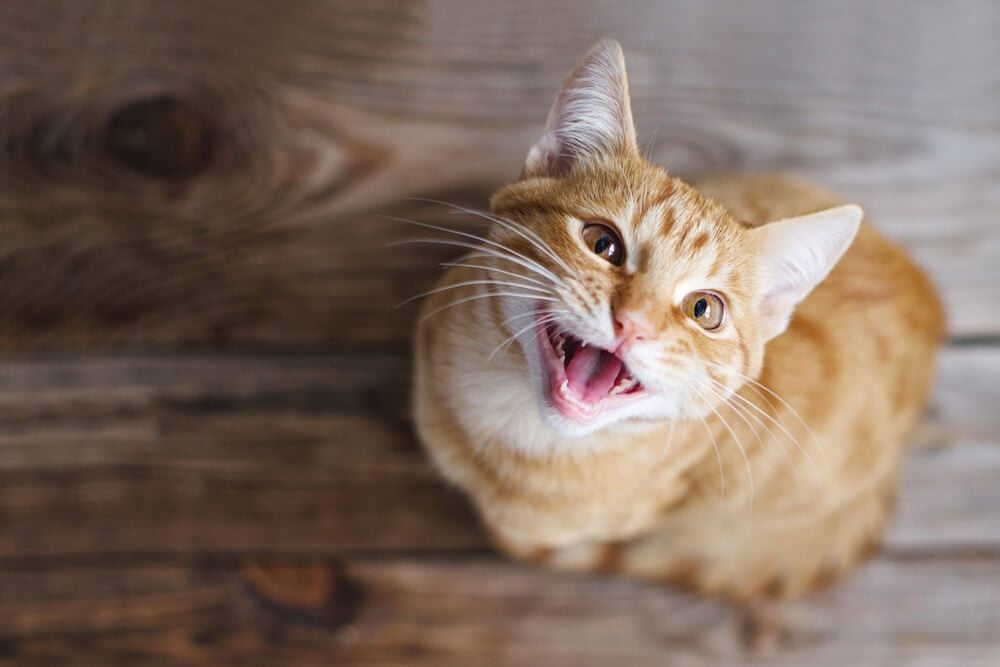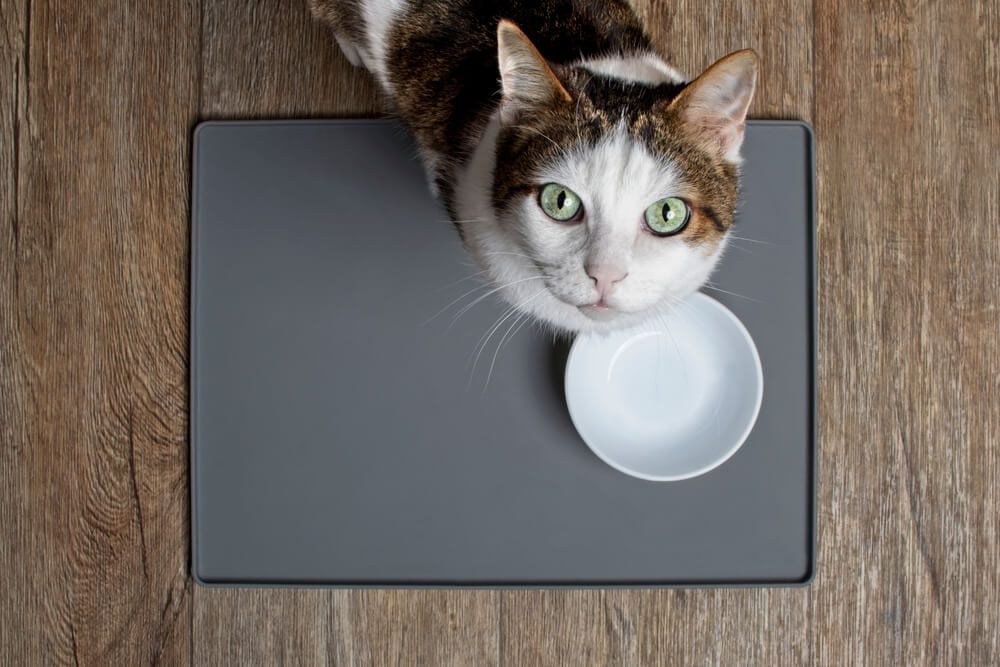The Best Homemade Cat Food for Your Feline: Our Top Recipes

Table of Contents
Is Homemade Cat Food Better?

Yes, homemade cat food can be better.
However, it really depends on how committed the pet owner is and whether they’re willing to add the proper supplements, vitamins, and minerals. Cooking homemade cat food is complex, and it’s a lot more than simply choosing a handful of online recipes.
According to pet expert Dr. Karen Becker, there are many benefits to making your cat fresh food.
- Pet owners control the ingredients.
- Fresh food tastes better, and cats are picky.
- People can save money.
Dr. Becker also recommends sticking to commercial frozen, dehydrated, or canned products if you’re leaving ingredients behind “as those are balanced and provide essential nutrients.” If you do plan to cook homemade cat food, it’s important to know what vitamins and minerals need to be added, and a board-certified nutritionist can help guide you.
Working with a nutritionist is essential. For example, pet owners need to ensure their cat gets enough vitamin A, but excessive doses may be toxic. Small doses are important, and only a nutritionist can answer questions about the appropriate amount of vitamins.
Is Homemade Cat Food Cheaper?
Yes, in fact, pet owners can save money by cooking homemade cat food, but whether it’s cheaper to cook meals is relative. Homemade cat food may be cheaper, but it’s certainly not safer. If pet owners aren’t working with a nutritionist, then it’s better to feed a commercial diet.
The next best alternative is wet food versus dry kibble. Wet or canned cat food isn’t cheap, but it’s by far the best option for your feline buddy.
Why wet? Cats need meals with high moisture content. “The moisture content of canned pet foods varies from 60% to >87%. Dry pet foods contain 3%–11% water, and semi-moist foods contain 25%–35% water. As a result, dogs and cats consuming predominantly canned food generally drink less water than those consuming predominantly dry diets,” according to Merck Veterinary Manual.
What Homemade Food can I Feed My Cat?
Protein is a vital part of a cat’s diet, as they are obligate carnivores, and too little can lead to amino acid deficiencies. Recipes should include a variety of protein sources like meat, organs, fish, and poultry. Also, consider developing meals for an adult cat as these may differ from a recipe you feed a kitten.
According to Dr. Becker, homemade food should include the following to make it a nutrient-rich cat recipe.
- Fatty acids or fish oils
- Fiber
- Bone replacement additions
- Veggies
- Cooked eggs
- Sardine or Salmon for vitamin D
- Meat and organs
A rotation of meat and veggies is the best diet. Cats are fussy and fresh food is their preference. Adding veggies when you serve the meal is a way to encourage your feline to try their new fresh food diet. Believe it or not, there are tasty veggies!
- Contains delicious, chunky, minced cage free turkey, chicken and duck simmered in savory gravy.
- Made with 100% human grade ingredients and is free of fillers.
- It meets human-grade quality and nutrition standards and satisfies your cat's taste and texture preferences.
- Use code VETERINARIANS30
What is the Best Homemade Cat Food?

We selected three homemade recipes for cats developed by a feline expert.
These recipes are developed by Debora Robertson and can be found in “Cooking for Cats,” a cookbook for cat lovers. According to Debora, developing a complex feline diet is complicated, “I feed my cat home-cooked meals 30 percent of the time, with a high-quality commercial wet food, making up the balance of her food.”
Disclaimer: These recipes are not meant to be fed as a substitute for daily meals and can be fed in addition to a balanced diet. Pet experts and vets recommend working with a board-certified vet nutritionist on a menu plan for your feline if you plan to cook.
*prep time varies for each of these recipes.
Recipe #1 Sardine Omelette
Equipment:
- Non-stick frying pan or skillet
- Spatula
- Small bowl and fork
- Frying pan for the eggs
Recipe Ingredients:
- 1 sardine, canned in olive oil with no added salt plus 1 tsp oil from the can
- 2 eggs, lightly beaten
- 1 tsp chopped parsley is optional
Recipe Directions:
- Blot the sardine with kitchen paper to remove excess oil
- In the small bowl, mash it finely with a fork and stir in parsley if you’re using it
- Tip 1 tsp of olive oil from the sardine can into a small non-stick frying pan.
- Rub it across the surface using kitchen paper, so the barest trace is left on the pan.
- Warm over medium-high heat and pour in the beaten eggs.
- Use a spatula to lift the edges while swirling the pan, so the uncooked eggs run to the sides.
- When the eggs are cooked through, tip them onto a plate and spread the sardine mixture over the top.
- Once the omelet is cool, roll it up and cut it into thin slices of about ⅝ inches.
*For feline friends that dislike sardines, use cooked and shredded chicken or shrimp.
Recipe #2 Turkey and Squash Meatballs
Equipment:
- Roasting pan with parchment paper
- Steamer or strainer over boiling water
- Baking pan
Recipe Ingredients:
- 1¼ cup peeled, deseeded squash cut into ¾ inch cubes
- 2 cups of minced turkey or chicken (ground)
- 1 tsp chopped fresh mint
Recipe Directions:
- Preheat the oven to 200 degrees
- Line the roasting pan with parchment paper
- Using a steamer or strainer over a pan of boiling water, steam the squash until it’s very soft.
- Transfer it to a bowl and mash it up. Leave to steam until it loses some of its moisture.
- After it cools, mix in the turkey or chicken and mint until it’s all well combined.
- Roll into meatballs and place in the pan with parchment paper.
- Back for about 25 minutes until cooked through.
- Meatballs can be kept in the fridge for a few days or kept frozen for up to 4 months.
*Pet owners can substitute turkey with chicken
Yield: Makes 30 meatballs
Total Cook Time: 40-minutes.
Recipe #3 Salmon Fish Cakes
Equipment:
- Pan for boiling millet (grains)
- Mixing bowl
Recipe Ingredients:
- One 7-oz can of salmon with no added salt, drained or 7-oz cup of cooked salmon, finely faked
- ½ cup cucumber grated
- ¼ cup of cooked millet (cooked weight)
- 1 tablespoon finely chopped fresh parsley
Recipe Directions:
- To cook millet, place one part millet to two parts water in a pan, bring to a boil, then reduce to a simmer and cook for 25 minutes.
- In a bowl, mix it all together until it’s well combined.
- Form this mixture into two or three patties and serve one patty as a meal and store the others.
- The patties can be stored in the refrigerator for up to 2 days or in the freezer for 4 months.
Yield: 2 to 3 fishcakes
Total Cook Time: 30-minutes
What Ingredients Should be in Homemade Cat Food?
Cats are obligate carnivores and their digestive system is designed to process meat. Ingredients like protein are essential, and too little can lead to major amino acid deficiencies.
Experts at Merck Veterinary Manual say that cats require dietary sources of Vitamin A and have other advice for pet owners, “If pet owners wish to feed their pets homemade diets, the diets should be prepared and cooked using recipes formulated by a veterinary nutritionist.” Here is a list from Merck of ingredients that should be in a cat’s diet.
- Protein sources may include meat, fish, and poultry.
- Amino acids, particularly arginine and taurine, must come from the protein in their meals.
- Fatty Acids such as arachidonic acid and linoleic acid are necessary and cannot be manufactured by a cat. Salmon oil can be used.
- Vitamin A and niacin are essential vitamins that must be taken from dietary sources (and not with supplements).
- Minerals like calcium, phosphorus, and magnesium. There are 12 essential minerals for cats – they are all very important for a cat’s health.
If you do choose to make your own homemade cat food you may want to invest in a food processor, meat grinder, or other kitchen tools to make the job easier!
Note that a healthy cat should never eat dog food and egg yolks always need to be cooked. A boneless chicken or turkey breast and ground meat are best for DIY meals. Also, stay away from raw bones.
What Ingredients Should I Avoid in Homemade Cat Food?
There are many human foods to avoid when you’re considering making your own cat food. Many fresh food recipes include a variety of veggies and there are a few you should never feed your pets. Cat owners should try chicken liver instead of onions!
- Onions: Never feed onions as these will cause Heinz body anemia in both cats.
- Raisins and Grapes: Both of these may cause organ toxicity in many pets.
- Garlic: Some experts say small amounts of fresh garlic are ok, but it’s better to identify other ingredients and skip the garlic.
- Foods with Xylitol: This artificial sweetener causes liver damage in pets.
If you want to feed fresh salmon, then always cook it. Salmon carry a parasite. Always remove the bones before feeding home-cooked fish. If you have questions, ask your DVM what ingredients to avoid.
Do I Need to Add Supplements to Homemade Cat Food?
Yes, the ingredients you put in your cat’s food will determine “what else she’ll need to help meet her dietary demands” and appropriate supplements, according to The Nest.
For example, taurine is an essential amino acid in the cat and must come from the protein you’re feeding in any recipe. So this can’t be added as a supplement, and this is a common topic in forums when you’re researching recipes. This is an example of why cooking fresh food for your cat can be complicated!
Pet owners need to make sure the right supplements are added to any homemade fresh food diet for felines. Feeding vitamins and mineral supplements along with the cat food you’re preparing are essential. Many pet owners benefit from working with a vet board-certified nutritionist to ensure they know the proper amounts and types of supplements to add either directly to the diet or separately in meatballs.
According to PetMD, when it comes to homemade cat food recipes, “Reputable sources will tell you exactly how much of each specific vitamin and mineral supplement needs to be added to the other ingredients in the recipe.” You don’t want to create health problems for a healthy cat by not following strict directions.
It’s important to work with an expert, DVM, or nutritionist to determine your cat’s needs. They can determine if cooked food, wet or dry food is best for your cat’s health. Raw cat food and raw meat (including raw chicken) are not a good option for many felines, especially those that have kidney disease. Your cat’s nutritional needs may result in commercial cat food.



















